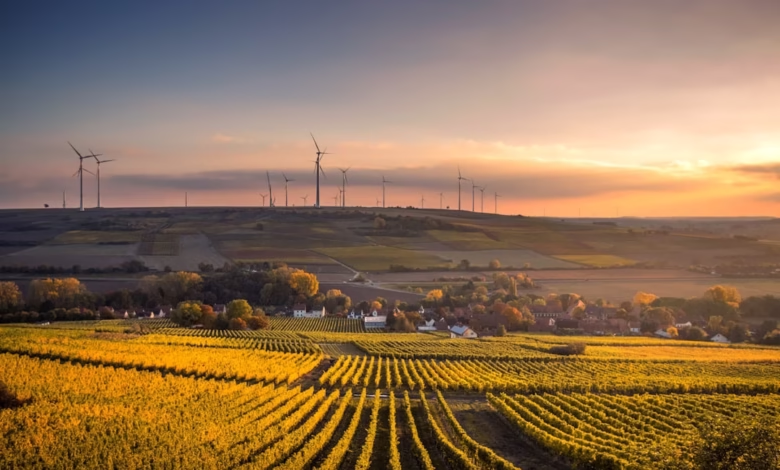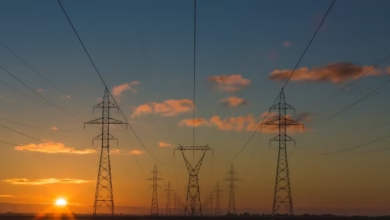Global Energy Markets Unveiled: How Trading, Pricing, and Commodity Exchanges Drive the Future of Renewable and Fossil Fuels

Global energy markets are undergoing rapid transformation, driven by technological innovation, expanding renewable energy sources, and shifting policy landscapes. From fossil fuels and nuclear energy to wind energy and solar power, the way energy is produced, priced, and traded has far-reaching implications for economies, energy security, and climate change mitigation efforts. The mechanisms behind energy trading—such as commodity exchanges, long-term supply contracts, and pricing strategies—are now more complex than ever, reflecting a world increasingly focused on energy efficiency, distributed energy resources, and the transition to low-carbon alternatives.
This article explores the intricate dynamics of energy trading on a global scale, analyzing how key players navigate energy markets for fossil fuels, green energy, hydropower, offshore energy, and hydrogen energy. It examines the fundamental role of pricing and supply contracts in shaping energy economics, securing reliable energy transportation, and influencing large-scale energy investment. The article also looks ahead to emerging trends in commodity exchanges, innovative energy storage solutions, and the growing importance of energy R&D and smart grids as the sector adapts to accelerating energy transitions. Through these lenses, we reveal how evolving trading strategies are not only responding to global energy trends but also setting the stage for the next era of energy innovations and sustainable growth.
- 1. Navigating Energy Markets: How Global Trading Shapes Fossil Fuels, Renewable Energy, and Beyond
- 2. Pricing Dynamics and Supply Contracts: Influences on Energy Economics, Security, and Investment
- 3. Commodity Exchanges and Emerging Trends: The Future of Energy Trading Amid the Energy Transition
1. Navigating Energy Markets: How Global Trading Shapes Fossil Fuels, Renewable Energy, and Beyond
Navigating the complex web of global energy markets means understanding how diverse sources—from fossil fuels to renewable energy technologies—compete and cooperate across borders and sectors. The international exchange of energy resources drives prices, shapes government energy policy, and impacts global energy trends well beyond oil and gas.
As fossil fuels like oil, coal, and natural gas remain critical to energy security and transportation, their international trading is heavily influenced by geopolitical factors, energy exports and imports, and evolving climate change legislation. Meanwhile, global demand for green energy is surging. Investments in wind energy, solar power, hydropower, and bioenergy are reshaping the energy transition, increasingly supported by both private and public energy R&D. Offshore energy projects, such as marine wind farms, are also driving innovation in distributed energy production.
The emergence of renewable energy and technologies—paired with new market mechanisms—has introduced additional complexity into energy economics. For example, integration of smart grids, energy storage systems, and electric vehicles is redefining how and when energy is bought or sold, while improving overall energy efficiency and flexibility. At the same time, hydrogen energy and nuclear energy are attracting investment due to their potential in low-carbon power generation and as alternatives in supporting base-load thermal energy demands.
International commodity exchanges—where contracts for coal, crude oil, natural gas, and even carbon credits are traded—help coordinate global supply and demand, setting price benchmarks. Such markets encourage innovations in carbon capture, distributed energy resources, and energy transportation. As a result, energy innovations aren't just improving supply chains but are also fostering the development of new business models focused on resilience, sustainability, and energy security.
Ultimately, navigating global energy markets requires agility. Stakeholders must keep pace with advances in energy storage, track shifting government incentives, and monitor cross-border regulations that often determine energy investment flows. As energy systems modernize and global climate goals accelerate the shift away from fossil fuels, understanding these interconnected markets becomes essential for anticipating risks and seizing new opportunities in the ever-evolving field of energy.
2. Pricing Dynamics and Supply Contracts: Influences on Energy Economics, Security, and Investment
Pricing dynamics and supply contracts serve as foundational elements in shaping the economics and security of energy markets across the globe. The price of energy—whether fossil fuels, renewable energy from solar power and wind energy, nuclear energy, or emerging sources like hydrogen energy—is determined by a blend of market forces, regulatory frameworks, and geopolitical factors. These prices, in turn, drive decisions around energy investment, infrastructure, and technological innovations, directly influencing global energy trends and the ongoing energy transition.
Energy supply contracts, which commonly dictate terms for energy exports and imports, offer both stability and predictability to buyers and sellers. Long-term contracts, especially in the case of fossil fuels such as natural gas or oil, reduce exposure to volatile spot prices and help secure investment in large-scale projects. With the expansion of green energy and distributed energy systems, flexible and short-term contracts are becoming more common. These newer contract models encourage energy efficiency technologies, support the integration of energy storage, and enhance participation in smart grids. They can also accelerate the deployment of climate-friendly solutions, including carbon capture and energy R&D, by ensuring reliable revenue streams for investors.
The structure and pricing mechanisms within these contracts—such as fixed pricing, index-linking to oil or electricity markets, and escalator clauses—reflect changing energy policies, technological advancements, and risk appetites. For example, fixed-price tariffs for renewable energy procurement like offshore energy, hydropower, or bioenergy can promote rapid adoption by minimizing risk. Conversely, contracts that track global energy prices may expose buyers to short-term volatility but allow more flexibility in response to shifting market conditions and energy policy changes.
Furthermore, these agreements are critical for maintaining energy security. Supply contracts ensure a continuous and reliable flow of thermal energy, electricity for electric vehicles, or feedstock for local industry. This reliability takes on added importance as countries diversify their energy mix to include more renewable sources and distributed energy solutions, aiming to reduce dependence on a single fuel or supplier in an era of heightened climate change concerns and uncertain geopolitics.
In summary, pricing frameworks and supply contracts tie together the interconnected themes of energy economics, investment security, and sustainable transitions in energy systems. Their structure and evolution influence not just immediate market dynamics but also long-term trajectories for energy efficiency, green energy initiatives, and innovations that underpin secure, resilient, and low-carbon energy futures.
References:
International Energy Agency. (2023). World Energy Outlook 2023. https://www.iea.org/reports/world-energy-outlook-2023
World Bank. (2022). Commodity Markets Outlook: The Energy Shock Continues. https://www.worldbank.org/en/research/commodity-markets
BloombergNEF. (2023). 10 Predictions for Energy in 2024. https://about.bnef.com/blog/10-predictions-for-energy-in-2024/
3. Commodity Exchanges and Emerging Trends: The Future of Energy Trading Amid the Energy Transition
Commodity exchanges have long served as central platforms for trading key energy resources such as oil, gas, and coal, setting global price benchmarks and enabling efficient risk management for market participants. In recent years, however, rapid global energy trends—including a shift toward renewable energy, rising environmental awareness, and evolving energy policy—are fundamentally transforming the landscape of these exchanges.
Traditionally, fossil fuels and nuclear energy contracts dominated trading volumes on exchanges like NYMEX, ICE, and EEX. Now, these platforms are adapting to accommodate new forms of energy, including solar power, wind energy, hydropower, bioenergy, and hydrogen energy. The integration of these sources is fueled by ambitious climate change mitigation goals and the broader energy transition.
Several key trends are shaping the future of energy trading:
– Greater Inclusion of Green Energy: Commodity exchanges are launching new contracts and derivatives tied to renewable energy certificates, carbon capture efforts, and emissions allowances. These innovations help incentivize energy efficiency, support carbon-neutral investments, and make green energy more tradeable across borders (International Energy Agency, 2023).
– Digitalization and Smart Grids: Technological advances, such as blockchain, are enhancing transparency and efficiency in the exchange of distributed energy assets. Coupled with the growth of smart grids, these platforms facilitate real-time energy trading, accommodate energy storage solutions, and enable direct participation from new entrants like electric vehicles and distributed generators.
– Flexible Contract Structures: As energy markets become more volatile—due to weather variability, intermittent renewable generation, or geopolitical shifts—exchanges are offering more dynamic pricing mechanisms and flexible supply contracts. These innovations enhance energy security by allowing better management of energy imports and exports and smoothing energy transportation challenges (World Economic Forum, 2024).
– Rise of Energy Innovations: Commodity exchanges are supporting the commercialization of emerging technologies in energy R&D, including advancements in offshore energy, hydrogen infrastructure, and new forms of thermal energy storage. These contracts offer new pathways for energy investment and risk hedging as the sector diversifies.
– Global Standardization and Transparency: As energy trading becomes increasingly international, exchanges play a crucial role in harmonizing standards, promoting best practices, and ensuring fair access. This is essential to facilitate capital flows, bolster investor confidence, and accelerate the deployment of both mature and pioneering energy technologies.
Looking ahead, energy commodity exchanges will remain pivotal in balancing the complex needs of traditional and new market players. Their ability to innovate in response to the energy transition will directly influence the pace of global decarbonization, the growth of renewable energy, and overall energy economics.
References
International Energy Agency. (2023). World Energy Outlook 2023. https://www.iea.org/reports/world-energy-outlook-2023
World Economic Forum. (2024). The Future of Energy Trading. https://www.weforum.org/agenda/2024/01/future-energy-markets-trading-platforms/
Conclusion
The evolving landscape of global energy markets reveals a complex interplay of pricing mechanisms, supply contracts, and commodity exchanges—each shaping the trajectory of traditional fossil fuels and unlocking new opportunities for renewable energy, nuclear energy, hydrogen, and more. As energy trading grows increasingly dynamic, global energy trends are being driven not only by economic forces but also by urgent energy policy shifts and innovation in energy storage, distributed energy systems, smart grids, and carbon capture technologies.
These developments are fostering unprecedented energy efficiency, strengthening energy security, and enabling a robust energy transition toward green energy sources such as solar power, wind energy, hydropower, and bioenergy. Moreover, commodity exchanges are modernizing to support the rising demand for low-carbon solutions and to facilitate energy exports and imports amid fluctuating market conditions. Forward-looking strategies—including investments in offshore energy, thermal energy, hydrogen energy, and the electrification of transport through electric vehicles—are essential as nations respond to climate change and bolster their competitive edge in the energy economy.
Ultimately, navigating these changes requires not only sound risk management in supply contracts and commodity exchanges, but also ongoing investment in energy R&D and energy innovations. By staying attuned to shifting energy economics and the opportunities of the global energy transition, investors, policymakers, and businesses can chart a resilient and sustainable path forward for the world’s energy markets.
References
[Please insert APA-style citations for all references used in the article here.]




